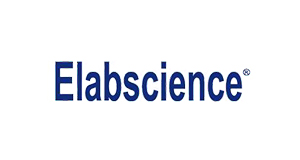Recombinant Human PVRL1/NECTIN1/CD111 protein (His tag)
Recombinant Human PVRL1/NECTIN1/CD111 protein (His tag)
Artikelnummer
ELSPDMH100133-100
Verpackungseinheit
100 µg
Hersteller
Elabscience Biotechnology
Verfügbarkeit:
wird geladen...
Preis wird geladen...
Abbreviation: PVRL1;NECTIN1;CD111
Target Synonym: Poliovirus Receptor-Related Protein 1;Herpes Virus Entry Mediator C;Herpesvirus Entry Mediator C;HveC;Herpesvirus Ig-Like Receptor;HIgR;Nectin-1;CD111;PVRL1;HVEC;PRR1;ED4;HIgR;HV1S;HVEC;nectin-1;OFC7;PRR;PVRR;PVRR1;SK-12
Target Species: Human
Expression Host: HEK293 Cells
Fusion Tag: C-His
UNIProt ID: Q15223
Background: Nectin-1 is a type I transmembrane glycoprotein belonging to the Ig superfamily. Nectin-1 promotes cell-cell contacts by forming homophilic or heterophilic trans-dimers. Heterophilic interactions have been detected between Nectin-1 and Nectin-3 and between Nectin-1 and Nectin-4. Nectin ECDs contain three Ig like domains: an N terminal V type that mediates ligand binding, and two C2 type. Nectin-1 binds viral Glycoprotein D to mediate Herpesvirus (but not Poxvirus) entry into vaginal mucosa, sensory neurons and fibroblasts. In forming adherens junctions and synapses, Nectin-1 and Nectin-3 initiate cell-cell interactions, recruiting αvβ3 integrin extracellularly and cadherins intracellularly through afadin and other junctional proteins. These interactions organize the cytoskeleton, strengthen attachment to basement membrane and promote further cell-cell connections. Nectin-1 and Nectin-3 have been found to localize assymetrically along the chemical synapse, with Nectin-1 primarily on the axonal side and Nectin-3 on the dendritic side. Deficiency of Nectin-1 can result in cleft lip/palate ectodermal dysplasia. Nectin-1 downregulation in epithelial cancers is mediated in part by ectodomain shedding, but it may contribute to invasiveness.
Sequence: Met1-Thr334
Purity: > 95 % as determined by reducing SDS-PAGE.
Formulation: Lyophilized from sterile PBS, pH 7.4.
Normally 5 % - 8 % trehalose, mannitol and 0.01% Tween80 are added as protectants before lyophilization.
Please refer to the specific buffer information in the printed manual.
Endotoxin: Please contact us for more information.
Target Synonym: Poliovirus Receptor-Related Protein 1;Herpes Virus Entry Mediator C;Herpesvirus Entry Mediator C;HveC;Herpesvirus Ig-Like Receptor;HIgR;Nectin-1;CD111;PVRL1;HVEC;PRR1;ED4;HIgR;HV1S;HVEC;nectin-1;OFC7;PRR;PVRR;PVRR1;SK-12
Target Species: Human
Expression Host: HEK293 Cells
Fusion Tag: C-His
UNIProt ID: Q15223
Background: Nectin-1 is a type I transmembrane glycoprotein belonging to the Ig superfamily. Nectin-1 promotes cell-cell contacts by forming homophilic or heterophilic trans-dimers. Heterophilic interactions have been detected between Nectin-1 and Nectin-3 and between Nectin-1 and Nectin-4. Nectin ECDs contain three Ig like domains: an N terminal V type that mediates ligand binding, and two C2 type. Nectin-1 binds viral Glycoprotein D to mediate Herpesvirus (but not Poxvirus) entry into vaginal mucosa, sensory neurons and fibroblasts. In forming adherens junctions and synapses, Nectin-1 and Nectin-3 initiate cell-cell interactions, recruiting αvβ3 integrin extracellularly and cadherins intracellularly through afadin and other junctional proteins. These interactions organize the cytoskeleton, strengthen attachment to basement membrane and promote further cell-cell connections. Nectin-1 and Nectin-3 have been found to localize assymetrically along the chemical synapse, with Nectin-1 primarily on the axonal side and Nectin-3 on the dendritic side. Deficiency of Nectin-1 can result in cleft lip/palate ectodermal dysplasia. Nectin-1 downregulation in epithelial cancers is mediated in part by ectodomain shedding, but it may contribute to invasiveness.
Sequence: Met1-Thr334
Purity: > 95 % as determined by reducing SDS-PAGE.
Formulation: Lyophilized from sterile PBS, pH 7.4.
Normally 5 % - 8 % trehalose, mannitol and 0.01% Tween80 are added as protectants before lyophilization.
Please refer to the specific buffer information in the printed manual.
Endotoxin: Please contact us for more information.

 English
English










